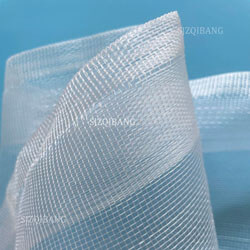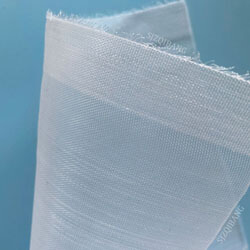- All
- Product Name
- Product Keyword
- Product Model
- Product Summary
- Product Description
- Multi Field Search
Views: 0 Author: Shijiazhuang Qibang Imp&Exp Co.,Ltd. Publish Time: 2023-05-05 Origin: www.sjzqibang.com








Greenhouses are an essential tool for plant cultivation in various climates and seasons. To maximize the benefits of greenhouse cultivation, it's important to select the appropriate materials for construction, including the type of netting used. Netting serves several purposes, such as providing shade and protecting crops from pests.
In this article, we will explore the two most commonly used greenhouse nettings, their purposes, characteristics, and applications. We will also discuss factors to consider when choosing the right netting for your greenhouse.

1. Introduction

Greenhouses are structures designed to provide an ideal growing environment for plants by controlling temperature, humidity, and other environmental factors. They have been used for centuries to extend growing seasons, protect crops from adverse weather conditions, and facilitate year-round production of fruits, vegetables, and flowers.
Greenhouses can be built in various shapes and sizes, using different materials, but they all have one thing in common: they allow growers to cultivate plants in a controlled environment, which can significantly improve crop yields and quality.
Over time, greenhouse construction techniques have evolved, and modern greenhouses are designed to be energy-efficient, environmentally friendly, and easy to maintain. They can be heated using solar, geothermal, or other renewable energy sources, and equipped with advanced ventilation systems, irrigation systems, and other technologies to optimize plant growth.
As the demand for locally grown produce and sustainable agriculture practices grows, greenhouse construction is becoming an increasingly important area of focus for farmers, researchers, and entrepreneurs.
Netting is a crucial component of greenhouse construction, serving a variety of purposes that are essential for plant growth. The right netting can regulate the amount of light, heat, and air that enters the greenhouse, ensuring a suitable environment for plant growth. It can also protect plants from pests and diseases that can cause significant damage to crops.

Shade netting
Shade netting is one of the most commonly used types of greenhouse netting. It is typically made of polyethylene and is used to control the amount of light that enters the greenhouse.
Shade netting is available in various shading percentages, ranging from 35% to 90%, and is chosen based on the type of plant being grown and the level of light required. Shade netting can also regulate the temperature inside the greenhouse, preventing overheating and reducing the risk of plant stress.
Insect netting
Insect netting is another commonly used type of greenhouse netting. It is typically made of woven fabric and is used to protect plants from pests and diseases.
Agricultural insect netting is available in various mesh sizes, ranging from small enough to prevent even the tiniest insects from entering to larger sizes that allow for better ventilation. Insect nets can also reduce the need for pesticides, making them an eco-friendly option for protecting crops.
Purpose
Shade netting is an essential component of greenhouse construction that is designed to regulate the amount of sunlight and heat that enters the structure.
Its primary purpose is to create a stable growing environment for plants by reducing the intensity of sunlight and providing shade. This is particularly important in regions with hot and sunny climates where excessive sunlight and heat can damage plants and reduce yields.
Shade net can also help to protect crops from harsh weather conditions, such as strong winds and hail, which can cause physical damage and reduce the quality of the produce.
 |  |  |  |
| Black Shade Cloth | Dark Green Shade Mesh | White Shade Netting |
Greenhouse shade cloth is typically made of high-density polyethylene (HDPE), which is durable, flexible, and resistant to UV radiation. It is available in different densities, which determine the amount of sunlight that is filtered through. The higher the density, the more shade the netting provides. Common densities for shade netting range from 35% to 90%.
Shade netting comes in various colors, including black, green, and white.
- Black netting is typically used to provide the most shade, as it absorbs and dissipates sunlight.
- White netting reflects the sunlight and provides a cooler environment, making it ideal for regions with intense heat.
- Green netting is often used for aesthetic purposes, as it blends in with the surrounding foliage and can create a more natural-looking environment.
Sun shade net can also come with different types of edges and sizes, including reinforced edges, knitted edges, taped edges, and grommets. These edges can help to prevent tearing and ensure a secure fit when the netting is installed in the greenhouse.
Greenhouse shade netting can be used for a variety of crops, including vegetables, fruits, and flowers. Some of the main applications of shade fabric in greenhouse construction include the following:
Reduced energy costs: By reducing the amount of sunlight entering the greenhouse, sun shade netting can help to lower energy costs associated with cooling and ventilation. This is especially important in regions with high energy costs or limited access to electricity. Sun shade netting can also reduce the need for artificial lighting, which can further reduce energy consumption.
Protection from weather conditions: Shade netting can protect crops from strong winds, hail, and other harsh weather conditions, reducing the risk of physical damage. It can also prevent waterlogging in the soil, which can occur when heavy rainfall is followed by intense sunlight. By protecting crops from weather conditions, shade nets can improve crop yields and quality.

Better plant growth: By providing a more stable growing environment, shade cloth for greenhouse can improve plant growth, yield, and quality. Plants that are exposed to excessive sunlight can become stressed, which can lead to reduced growth and lower-quality produce. Shade cloth for plants can also help to regulate the temperature and humidity inside the greenhouse, creating a more comfortable and conducive environment for plant growth.
Reduced risk of sunburn: Shade netting can protect plants from sunburn, which can occur when plants are exposed to too much sunlight. Sunburn can cause physical damage to the plant's leaves and reduce the plant's ability to photosynthesize. By reducing the risk of sunburn, shade netting can help to maintain healthy plants and improve crop yields.
Purpose
Insect netting is a type of netting used in greenhouse construction to prevent insects and other pests from entering the structure.
Its primary purpose is to create a barrier between the plants and the outside environment, preventing the entry of harmful insects and pests that can damage crops and reduce yields.
Anti insect net also helps to reduce the use of pesticides and other chemicals, creating a safer and more sustainable growing environment.
 |  |  |  |
| 24 mesh Insect Netting | 50 mesh Insect Mesh | Colorful Anti Insect Net |
Insect netting is typically made of high-density polyethylene (HDPE), which is durable, flexible, and resistant to UV radiation. The netting is available in different mesh sizes, which determine the size of the insects that can be excluded. Common mesh sizes for insect net range from 0.3 mm to 1.2 mm.
Insect netting can come in different colors, including white, transparent, and other colors.
- White netting reflects sunlight and reduces the heat buildup inside the greenhouse, creating a cooler environment.
- Transparent netting allows more sunlight to enter the greenhouse, providing more energy for plant growth.
Insect netting can also be reinforced with tape or metal wires to prevent tearing and ensure a secure fit.
Insect netting is widely used in greenhouse construction, particularly in regions with high insect pressure. Anti insect netting is also used in outdoor farming and gardening to protect crops from pests and insects. Some of the main applications of insect netting in greenhouse construction include:
Reduced use of pesticides: Insect netting for greenhouse can help to reduce the use of pesticides and other chemicals, creating a safer and more sustainable growing environment. This can also help to reduce the cost of pest control and minimize the impact of pesticides on the environment.

Protection from insect damage: Insect netting provides a barrier that prevents harmful insects and pests from entering the greenhouse and damaging crops. This can help to reduce crop losses and improve yields.
Improved plant health: By preventing insect damage, greenhouse insect netting can improve the health and vitality of plants. This can lead to better plant growth, higher yields, and improved quality of produce.
Better air circulation: Anti insect net allows for better air circulation and ventilation inside the greenhouse, which can improve the overall growing environment for plants. This can help to reduce the risk of fungal diseases and other plant disorders.
Overall, insect netting is an essential component of greenhouse construction that provides growers with a safe and sustainable way to protect their crops from harmful insects and pests. By choosing the right type of insect netting for their specific growing conditions and crop types, growers can optimize plant growth, reduce pesticide use, and protect their crops from insect damage.
When selecting a greenhouse netting, it is important to consider the climate and weather conditions of the location. The netting should be chosen based on the temperature, humidity, and amount of sunlight the greenhouse receives.
In regions with hot and sunny climates, shade netting can help to reduce the intensity of sunlight entering the greenhouse and prevent plant damage. In areas with high winds, insect netting with reinforced edges may be required to prevent tearing.

The type of crop and its growth stage are also essential factors to consider when choosing a netting. Different crops have varying requirements for light, humidity, and ventilation. Therefore, the netting should be selected based on these needs.
Plants that require more sunlight may need lighter shade net, while those that require more humidity may need denser shade netting. In addition, young plants may require more protection from pests and insects than mature plants.
The cost of the netting and its maintenance requirements should also be taken into account when selecting a greenhouse netting. Some nettings may require frequent cleaning and replacement, which can increase maintenance costs.
The initial cost of the netting should also be considered, as some nettings may be more expensive than others. It is crucial to balance the cost of the netting with the benefits it provides to ensure the best value for money.
In addition to the above factors, greenhouse construction companies should consider other factors when selecting a netting. These may include the availability of the netting, the reputation of the manufacturer, and the compatibility of the netting with the greenhouse structure.
Working with a reputable manufacturer that can provide guidance on the best type of netting for the specific greenhouse and crop types is important. The netting should also be compatible with the greenhouse structure and be easy to install and maintain.

Netting plays a crucial role in greenhouse construction, providing essential protection for plants against various environmental factors. Shade netting and insect netting are the two most commonly used greenhouse nettings, each with its unique purpose, characteristics, and applications.
When choosing a netting material for your greenhouse, it's essential to consider factors such as climate and weather conditions, crop type and growth stage, and budget and maintenance requirements.
If you need shade netting or insect netting for your greenhouse, please get in touch with Shijiazhuang Qibang. Our team of experts can help you choose the right netting for your greenhouse, taking into account all the necessary factors. With the right netting, you can create an optimal growing environment for your plants and ensure a successful harvest.